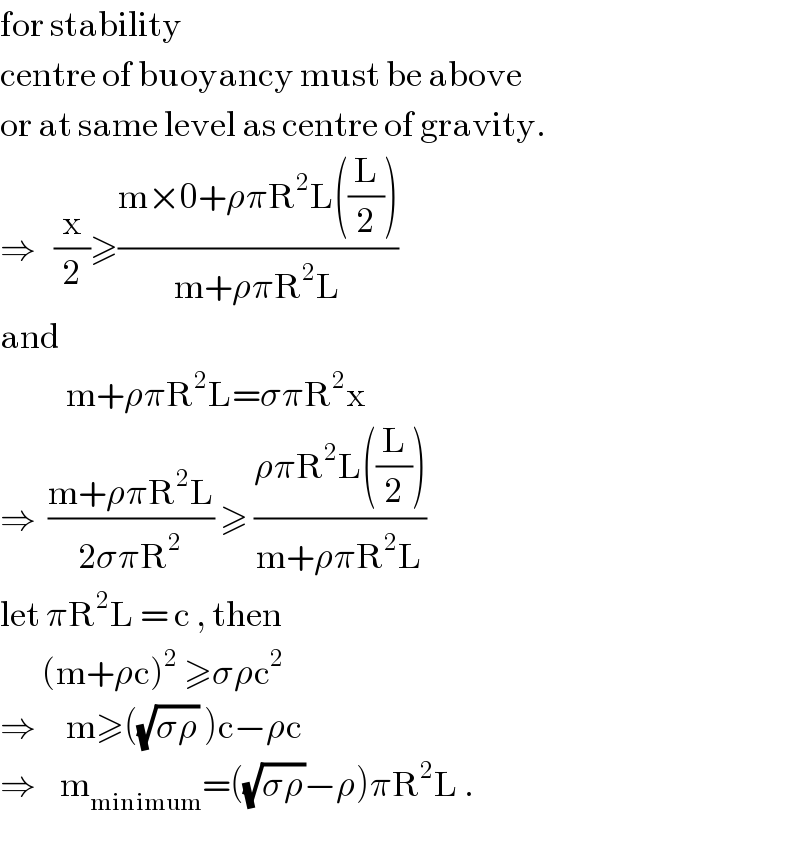
Question and Answers Forum
Previous in Properties of Matter Next in Properties of Matter
Question Number 57114 by Tinkutara last updated on 30/Mar/19

Commented by ajfour last updated on 30/Mar/19

Commented by mr W last updated on 31/Mar/19

Commented by ajfour last updated on 31/Mar/19

Commented by mr W last updated on 31/Mar/19

Answered by ajfour last updated on 30/Mar/19

Commented by Tinkutara last updated on 30/Mar/19
Thank you Sir! But what was wrong with previous answer?
Commented by ajfour last updated on 30/Mar/19

